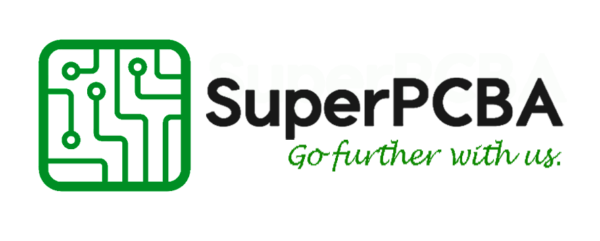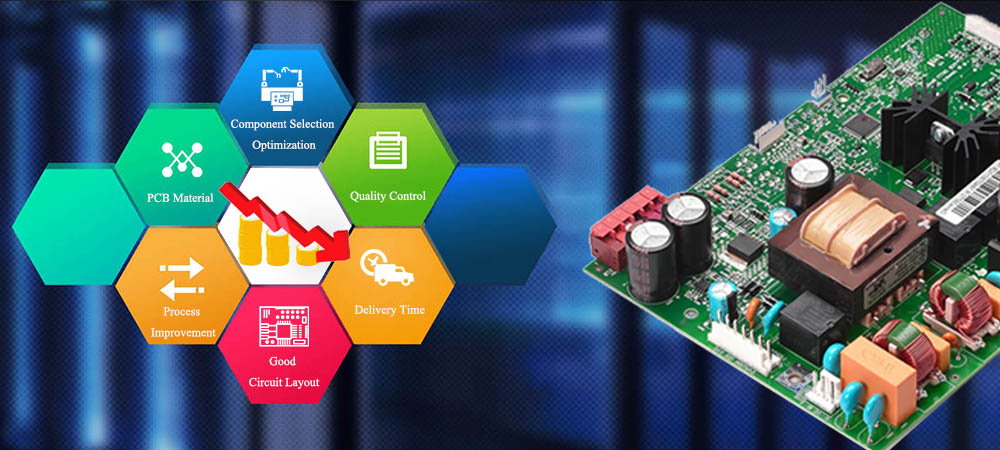The main components of the cost of circuit board fabrication and assembly include circuit board design, component selection, raw material control, factory production, management, and various expenses incurred during the process such as scrap rate. It is important to control the cost of circuit boards using a scientific and reasonable approach, rather than using low-quality materials directly to reduce costs, as this approach would result in more losses than gains. In the following section, SuperPCBA will share insights based on 15 years of manufacturing experience on how to scientifically and reasonably to reach the target of cost reduction during the circuit board fabrication and assembly process, thereby saving procurement budgets for customers.
Design Optimization
Design optimization is a key strategy to reduce costs by improving the layout and component selection of the circuit board. Here are some suggestions for design optimization:
PCB Size Reduction:
By optimizing the layout and using smaller package components, the size of the circuit board can be reduced. This not only reduces material costs but also shrinks the overall product volume. For example, replacing through-hole components with surface-mount device (SMD) components can significantly reduce the size. Reducing the PCB size can significantly lower manufacturing costs. According the studies (“PCB Design Optimization for Cost Reduction.” IPC White Paper. 2015.) have shown that reducing the PCB size from 100mm x 100mm to 80mm x 80mm can reduce costs by approximately 10%.

Layer Reduction:
Minimize the number of layers in the circuit board. Each additional layer increases manufacturing costs, so choosing the appropriate number of layers can lower costs. For simple designs, consider changing from multi-layer boards to double-layer or four-layer boards, which can significantly reduce manufacturing costs. According to the study(“Cost-Effective Design of Printed Circuit Boards.” DuPont. 2017.), changing from a six-layer board to a four-layer board can save approximately 15% in manufacturing costs.
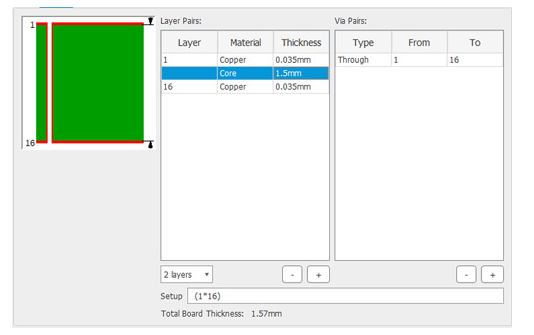
Component Selection Optimization:
Choose cost-effective components and select suitable package types based on actual requirements. SMD components are typically cheaper than through-hole components because they require fewer manufacturing processes. Choosing appropriate components can also improve the performance and reliability of the circuit board. Using SMD components can reduce assembly costs by about 30%.
Good Circuit Layout:
With a well-planned circuit layout, the length and complexity of signal paths can be minimized, reducing the likelihood of electromagnetic interference and signal attenuation. This helps improve circuit reliability and performance, reduces the generation of poor signals and failures, and consequently lowers manufacturing costs and rework rates.
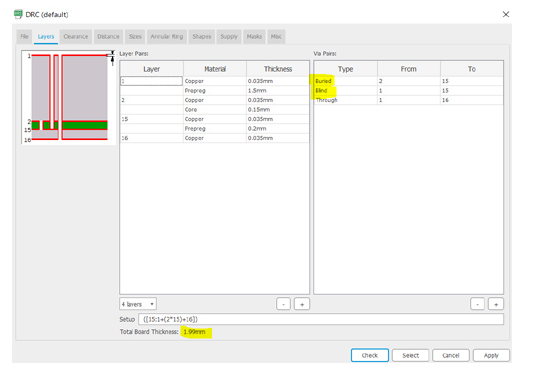
Material Selection:
Correct material selection in the circuit board manufacturing process can significantly impact costs. Here are some suggestions:
PCB Material:
In most cases, conventional FR-4 material is sufficient to meet the requirements and is cost-effective. Choosing more expensive special materials is only necessary for specific requirements or special environments. In most cases, using standard FR-4 material can lower costs without compromising performance. According to market research(“Global Printed Circuit Board (PCB) Market – Growth, Trends, COVID-19 Impact, and Forecasts (2021 – 2026).” Mordor Intelligence.), the price of conventional FR-4 PCB material is relatively low in most applications, while special materials (such as high-frequency materials) can significantly increase prices, usually by 50% or more compared to FR-4 material.
PCB Thickness:
Non-standard PCB thickness increases manufacturing costs. Typically, choosing standard PCB thickness (e.g., 1.6mm) can lower costs because these standard thickness materials are more common and competitively priced. According to SuperPCBA production dates, choosing the standard 1.6mm PCB thickness can reduce manufacturing costs by approximately 20% compared to non-standard thickness. This is because standard thickness materials are easier to obtain and have more competitive prices.
Solder Mask and Silkscreen Colors:
Choosing common colors such as green for the solder mask and white for the silkscreen can lower costs. Manufacturers often optimize their processes for these common colors, resulting in more competitive prices. Fancy-colored PCBs (such as black, red, and blue) tend to be more expensive. Based on SuperPCBA’s years of production experience, using green solder mask and white silkscreen can save approximately 10% to 20% in manufacturing costs because the processes for these colors are more mature and common, reducing production costs.
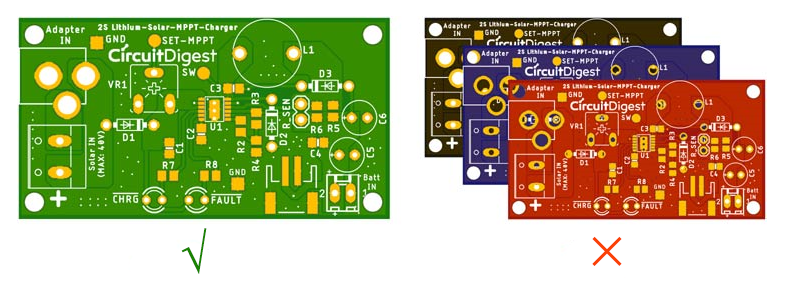
Appropriate Surface Treatment:
Choosing the right surface treatment method can reduce soldering costs for PCBA. For example, traditional methods like Hot Air Solder Leveling (HASL) and Hot Air Solder (HAS) are commonly used, relatively inexpensive, and easy to implement. These methods provide good solder connections and protection, reducing the need for costly special surface treatment methods. Some special surface treatment methods, such as Metalized Carbon (SiC) and Nickel-Metal Alloy (Ni/Au), may be required for specific applications, but they are typically more expensive than traditional treatment methods.
For how to choose the right surface finish, our article “How to Choose the Right Surface Finish for Your PCB” could be your reference.
Production Process Improvement:
Process Improvement:
By improving production processes and workflows, production efficiency can be increased, production cycles can be reduced, and production costs can be lowered. Process optimization includes rational process scheduling, the use of automated equipment, and layout optimization of production lines. Adopting automated production equipment can improve production efficiency and reduce labor costs. Automated equipment can also reduce errors and rework during production.
Process Control:
Strictly controlling process parameters at each production stage ensures process stability and consistency. This can reduce the production of defective products and improve production efficiency and quality.
Resource Utilization:
Proper utilization of equipment and manpower reduces idle time and waste during production, improving resource utilization efficiency.
Quality Control:
Quality Control:
Strengthening quality management and control ensures product quality at every stage from raw material procurement to the production process. Through qualified material selection and strict control of production processes, the generation of non-conforming products can be reduced.
Enhanced Inspection and Testing:
Establish comprehensive inspection and testing processes to ensure thorough inspection and testing of products before leaving the factory. This helps identify potential issues and defects and allows for timely repairs, reducing scrap rates.
Process Improvement:
Through continuous process improvement and problem analysis, identify and address root causes that contribute to high scrap rates. Adjust and optimize production lines to improve production efficiency and product quality.
Adjusting Order Quantity and Delivery Time:

Order quantity:
Order quantity is also a major factor in reducing production costs, usually inversely proportional to the price. In other words, when the order quantity increases, the manufacturing cost of PCBs decreases.
Delivery Time:
If your order does not have strict delivery time requirements, you can provide suppliers with sufficient delivery time in exchange for higher price discounts. If you need the supplier to complete your PCB assembly order in a very short time, the PCBA cost will be significantly higher. This is because the supplier needs to allocate a large amount of resources to meet the urgent order requirements, which greatly increases the difficulty and cost of production.
Finding the Right Supplier:
Obtain Multiple Quotes:
Communicate with multiple suppliers and obtain quotes to compare prices and services, and select the most competitive supplier.
Consider Total Cost:
In addition to the price of individual circuit boards, factors such as overall service quality, delivery time, and after-sales support from the supplier should also be considered.
If you don’t know how to choose your supplier, our article “How to Choose the Right PCBA Supplier: A Comprehensive Guide” could be your great guide.
By implementing the above measures, you can effectively reduce the cost of PCB production and assembly while maintaining product quality and performance. Please note that different projects and requirements may vary, so it is recommended to adjust and optimize according to specific circumstances.
With 15 years of production experience, SuperPCBA can meet various PCB assembly needs of customers and help customers to optimizing the cost of PCB production and PCB assembly. We always strive to provide customers with the fastest production, the best prices, and the optimal service. We welcome customers to inquire and establish long-term and mutually beneficial partnerships, working together to explore the market and create a better future.
